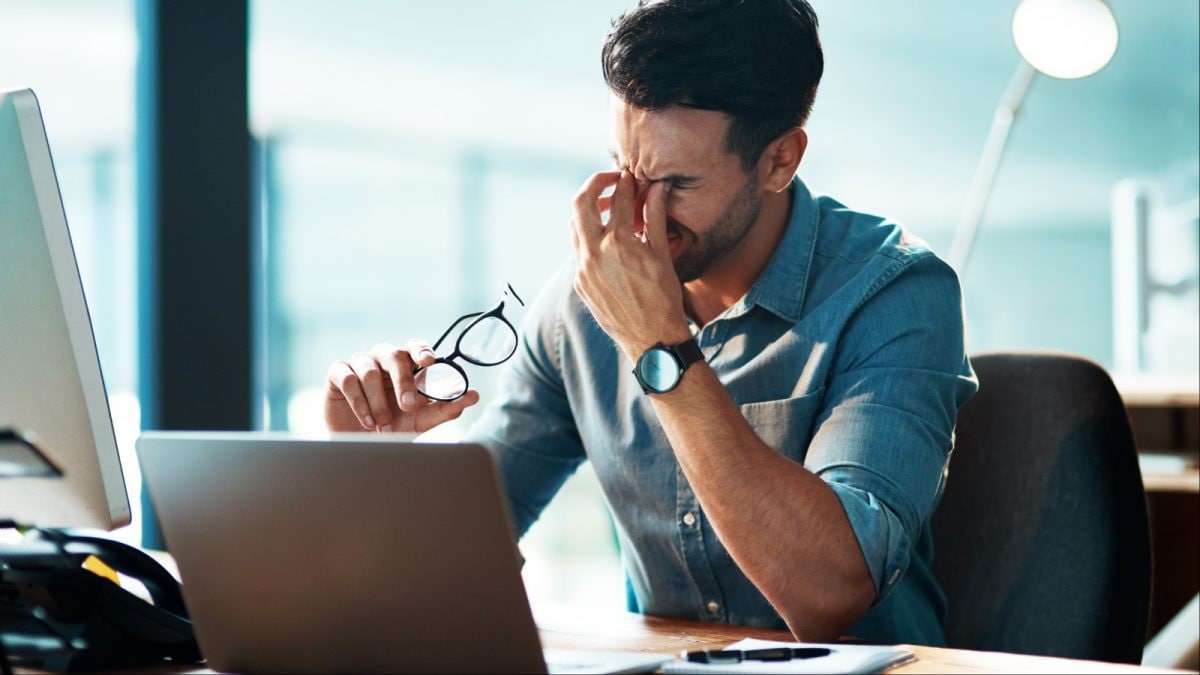Staring At Screens All Day? Ophthalmologist Shares How To Save Your Sight

Last Updated:July 27, 2025, 17:55 IST
In a screen-dominated world, young professionals are staring at their screens for increased durations. This has led to a rise in cases of Digital Eye Strain.
Regular breaks help relax and refocus your eyes.
In today’s hyperconnected lifestyle, screens are everywhere – from laptops and tablets to smartphones and smart TVs. While technology has made life more efficient and accessible, prolonged screen use has introduced a new health concern: digital eye strain. Also known as computer vision syndrome, this condition affects millions of people who spend long hours staring at digital devices.
Understanding Digital Eye Strain
“Digital eye strain is not a disease but a collection of eye and vision-related problems resulting from extended screen use. As we enter a new age of increased technology use, more attention is being focused on the emerging cases of Digital Eye Strain or Computer Vision Syndrome, especially among young professionals, college students and even school-age children,” explains Dr Monesh Moolchandani, MS, Ophthalmic Surgeon at Inamdar Multispeciality Hospital, Pune.
Some of the symptoms of Digital Eye Strain include eye fatigue, temporary vision loss, dry eyes, and spasms of the eye. Some of the factors which bring this condition about are low blinking rates, excessive near-sighted focus, bad screen posture, and too much HEV blue light.
“Poor posture, improper lighting, screen glare, and uncorrected vision problems can worsen these symptoms. With the average adult spending more than seven hours a day in front of screens, often longer for remote workers and students, the need to take preventive measures has never been greater,” stresses Dr Moolchandani.
Simple Habits That Make A Difference
Fortunately, a few mindful habits can help prevent or reduce digital eye strain. Symptoms of eye strain can be managed with adequate measures.
To manage stress on the eyes caused by technology screens, the “20-20-20″ rule permits one to take a break every twenty minutes to focus on an object located 20 feet away for 20 seconds. Each time the eyes are lubricated with preservative-free drops, the discomfort fades.
“Filters which block blue lights or glasses which are treated with special coatings which are claimed to reduce HEV light may be able to lower possible risks of phototoxic damage. However, further research on this remains to be seen,” said Dr. Moolchandani
Optimise Your Workspace
Ergonomics play a key role in preventing discomfort. Position your screen so that it is slightly below eye level and about an arm’s length away. Use chairs that support good posture and avoid sitting in dim lighting, which forces your eyes to work harder. Anti-glare screen protectors or blue light filters can also reduce strain.
Blink More, Blink Often
When concentrating on a screen, people tend to blink less frequently, sometimes up to 50% less. This leads to dry, irritated eyes. Making a conscious effort to blink more can help maintain natural eye moisture. Keeping a bottle of lubricating eye drops handy can also relieve dryness, especially in air-conditioned environments.
Adjust Screen Settings
Most devices allow customisation of brightness, contrast, and font size. Adjusting screen brightness to match your surroundings reduces strain. Enlarging text size makes reading easier, and switching to dark mode can be gentler on the eyes during prolonged reading.
Limit Unnecessary Screen Time
Being intentional with screen use is also crucial. Reducing unnecessary scrolling, especially before bedtime, can improve sleep quality and overall eye comfort. Set screen-free zones or time blocks in your day to allow your eyes regular breaks from digital exposure.
Annual Eye Checkups Matter
Dr. Moolchandani further says, “A thorough eye examination is needed when refractive errors, dry eye syndrome, or problems with eye teaming skills are suspected. While digital screens and other devices may be essential in today’s society, they can be mitigated with preventive measures and proper eye care.
In a world where screens are unavoidable, taking steps to protect your vision is essential. Small, consistent changes in daily habits can help minimise digital eye strain and preserve long-term eye health.
view comments
- Location :
Delhi, India, India
- First Published:
[title_words_as_hashtags




